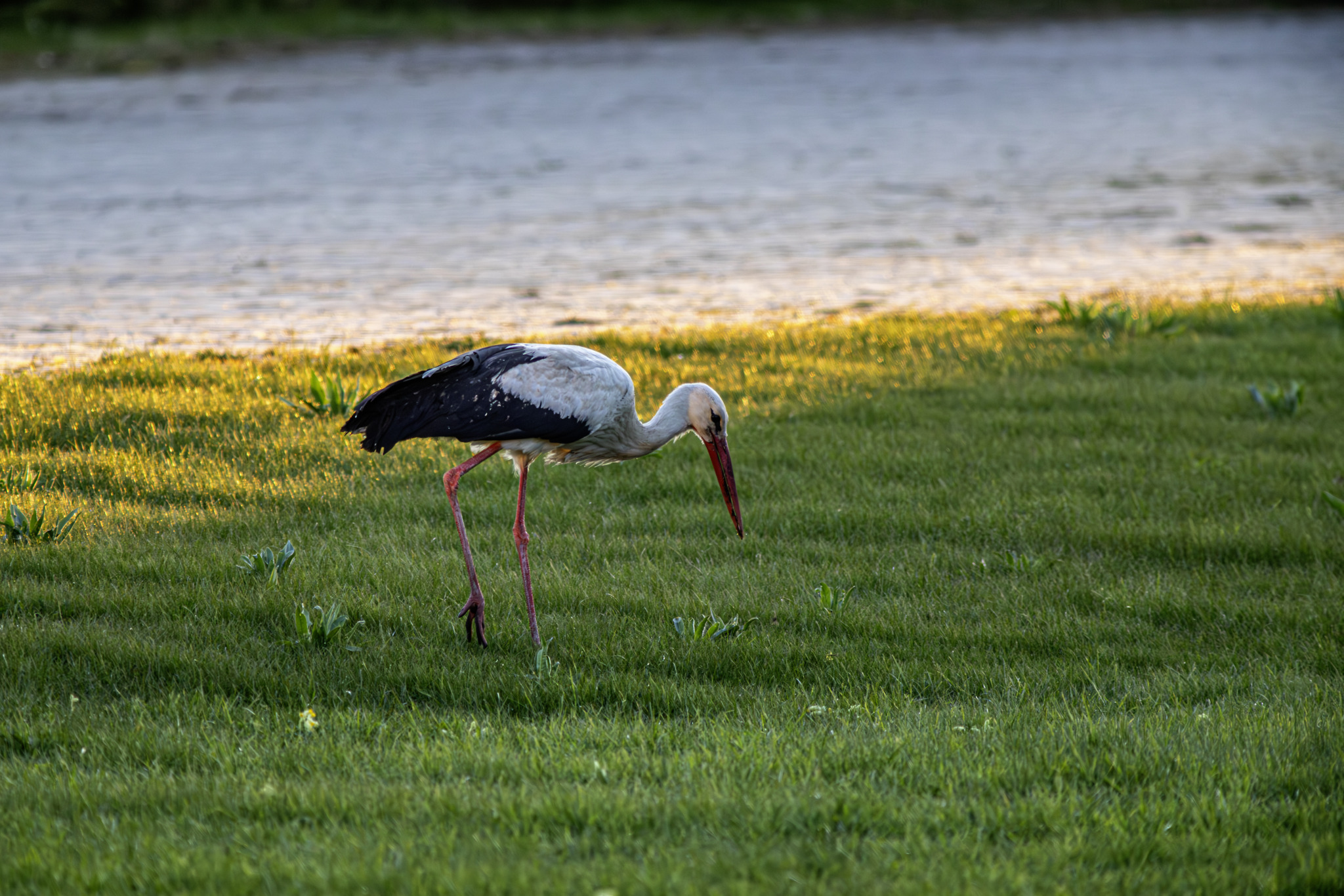The White Stork (Ciconia ciconia) is a large, long-legged bird belonging to the family Ciconiidae. Here are some key features and characteristics of the White Stork:
- Appearance: White Storks are tall birds with a distinctive black-and-white plumage. They have a white body and wings with black flight feathers and primary feathers. Their long legs are also black, and their bill is long, straight, and red in color. During the breeding season, adults develop red skin around their eyes and base of their bill.
- Size: White Storks are large birds, measuring around 100 to 115 centimeters (39 to 45 inches) in length from beak to tail, with a wingspan of about 155 to 215 centimeters (61 to 85 inches). They typically weigh between 2 to 4.5 kilograms (4.4 to 9.9 pounds).
- Habitat: White Storks are found in a variety of open habitats, including grasslands, wetlands, marshes, meadows, agricultural fields, and urban areas. They prefer areas with abundant food sources and suitable nesting sites, such as trees, cliffs, rooftops, or man-made structures.
- Range: White Storks have a wide distribution across Europe, Africa, and parts of Asia. They breed in northern and central Europe, with migratory populations traveling to wintering grounds in sub-Saharan Africa. Some resident populations also occur in Africa and Asia.
- Diet: White Storks are opportunistic feeders with a varied diet that includes a wide range of prey items, such as insects, worms, small mammals, reptiles, amphibians, fish, and even carrion. They forage primarily by walking slowly through grasslands or wading in shallow water, using their sharp bill to catch prey.
- Behavior: White Storks are known for their impressive soaring flight, characterized by outstretched wings and gliding on thermal air currents. They are highly social birds and often gather in large flocks, particularly during migration and at feeding sites. They are also known for their distinctive bill-clattering vocalizations, which are used for communication and pair bonding.
- Breeding: White Storks are monogamous and form long-term pair bonds with their mates. They typically build large, bulky nests made of sticks, twigs, and other vegetation, often located on tall structures such as trees, chimneys, or telephone poles. Both parents take turns incubating the eggs and caring for the young.
- Conservation: While the White Stork is not currently considered globally threatened, some populations have declined due to habitat loss, changes in land use, pesticide use, collisions with power lines, and other human-related factors. Conservation efforts focused on habitat preservation, protection of nesting sites, and reducing human disturbances are important for the continued survival of White Stork populations.
Overall, the White Stork is an iconic and culturally significant bird species appreciated for its beauty, grace, and impressive migratory feats. It is a symbol of fertility, good luck, and rebirth in many cultures and has captured the imagination of people for centuries.
Views: 17
Subscribe to the newsletter:
